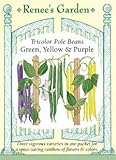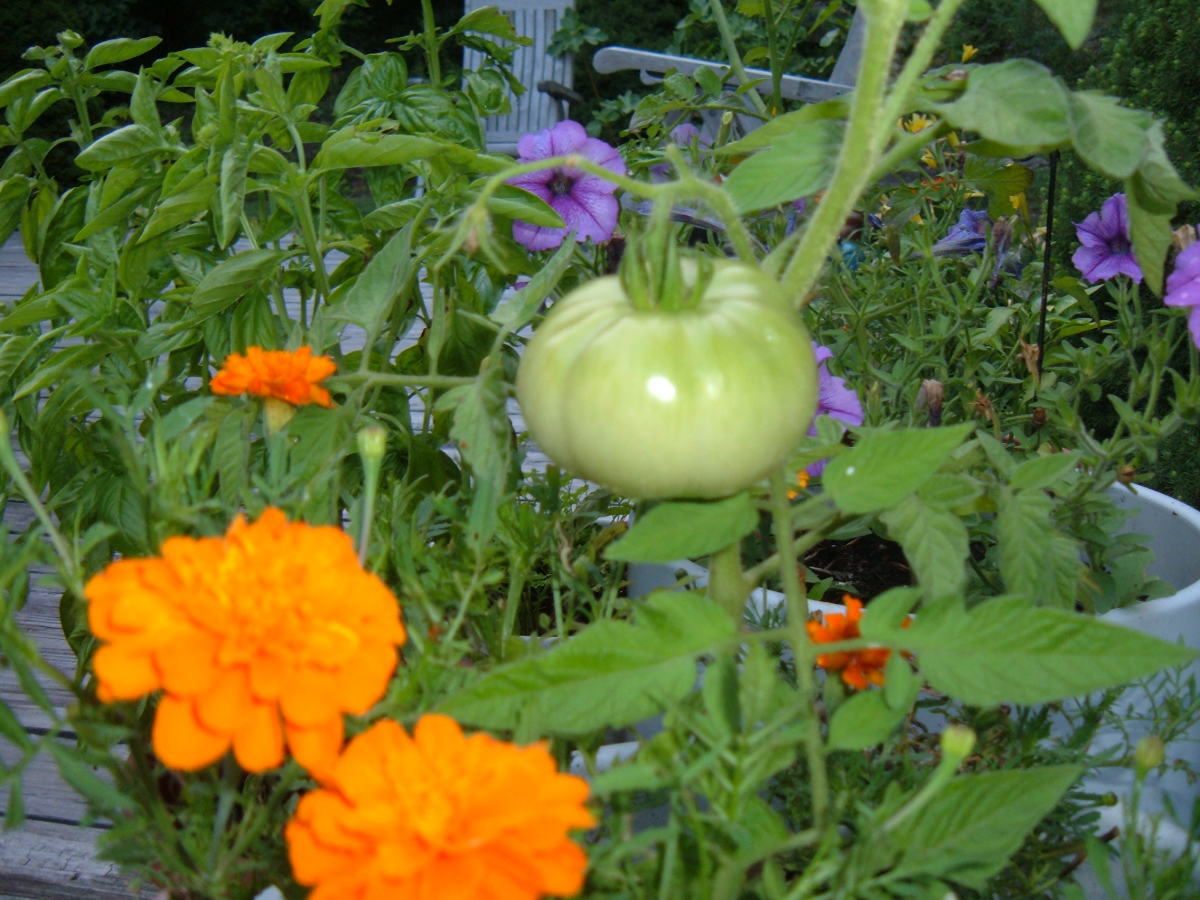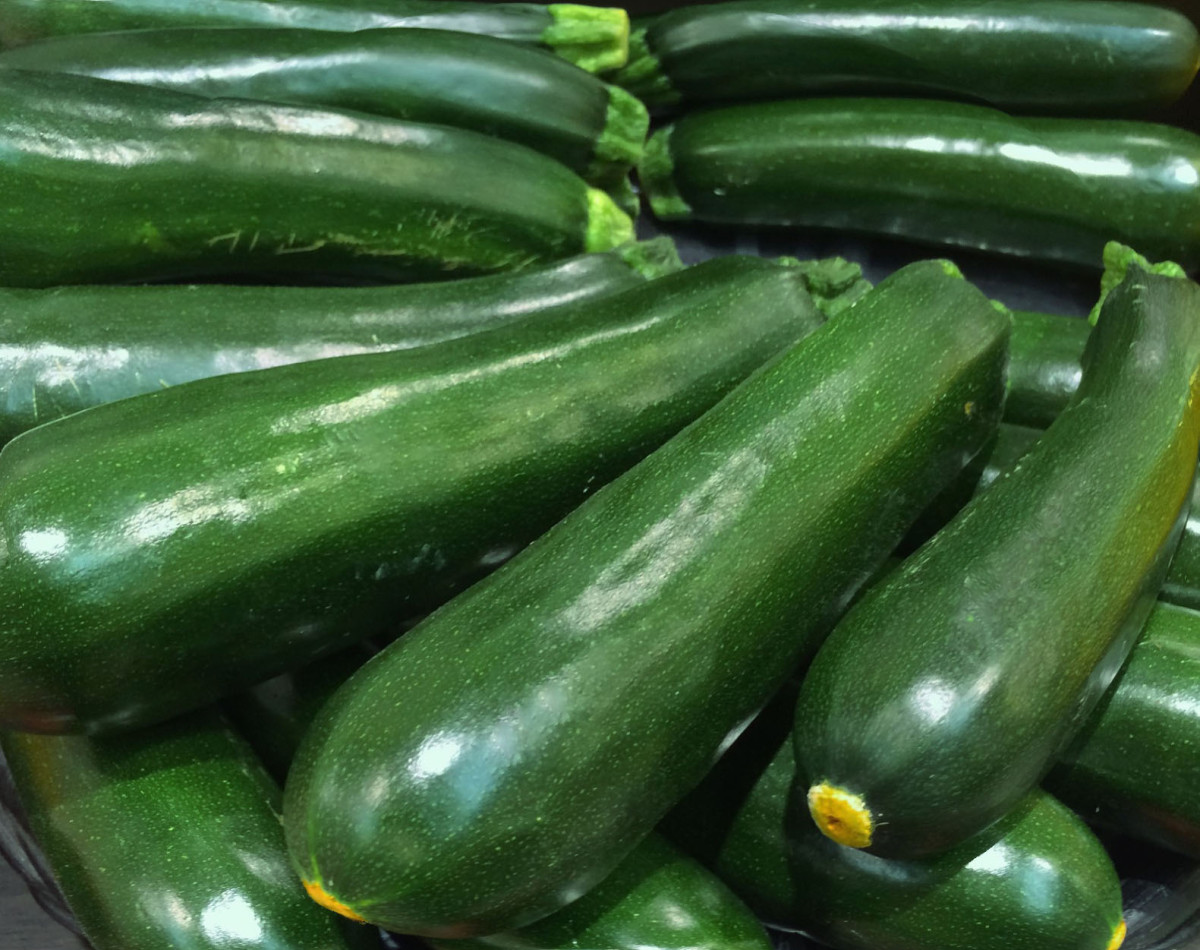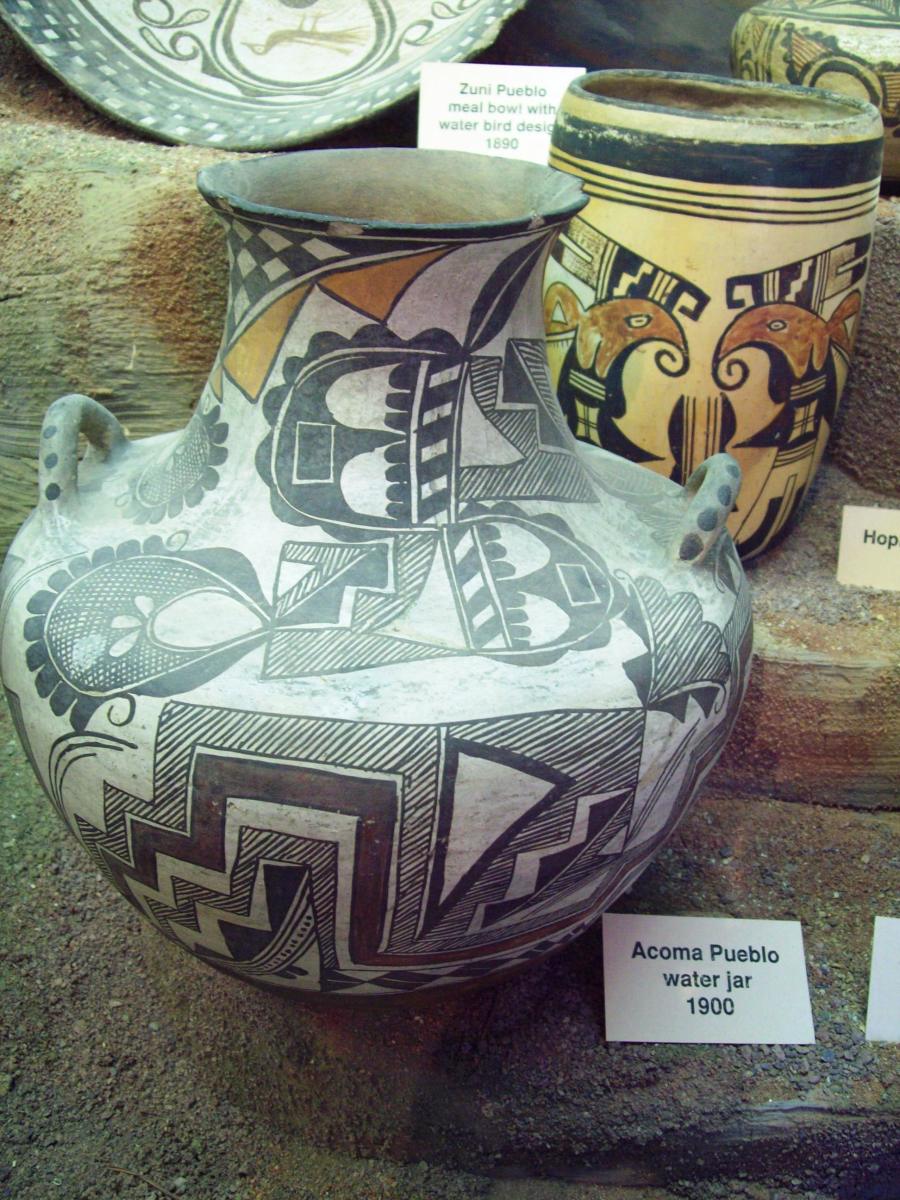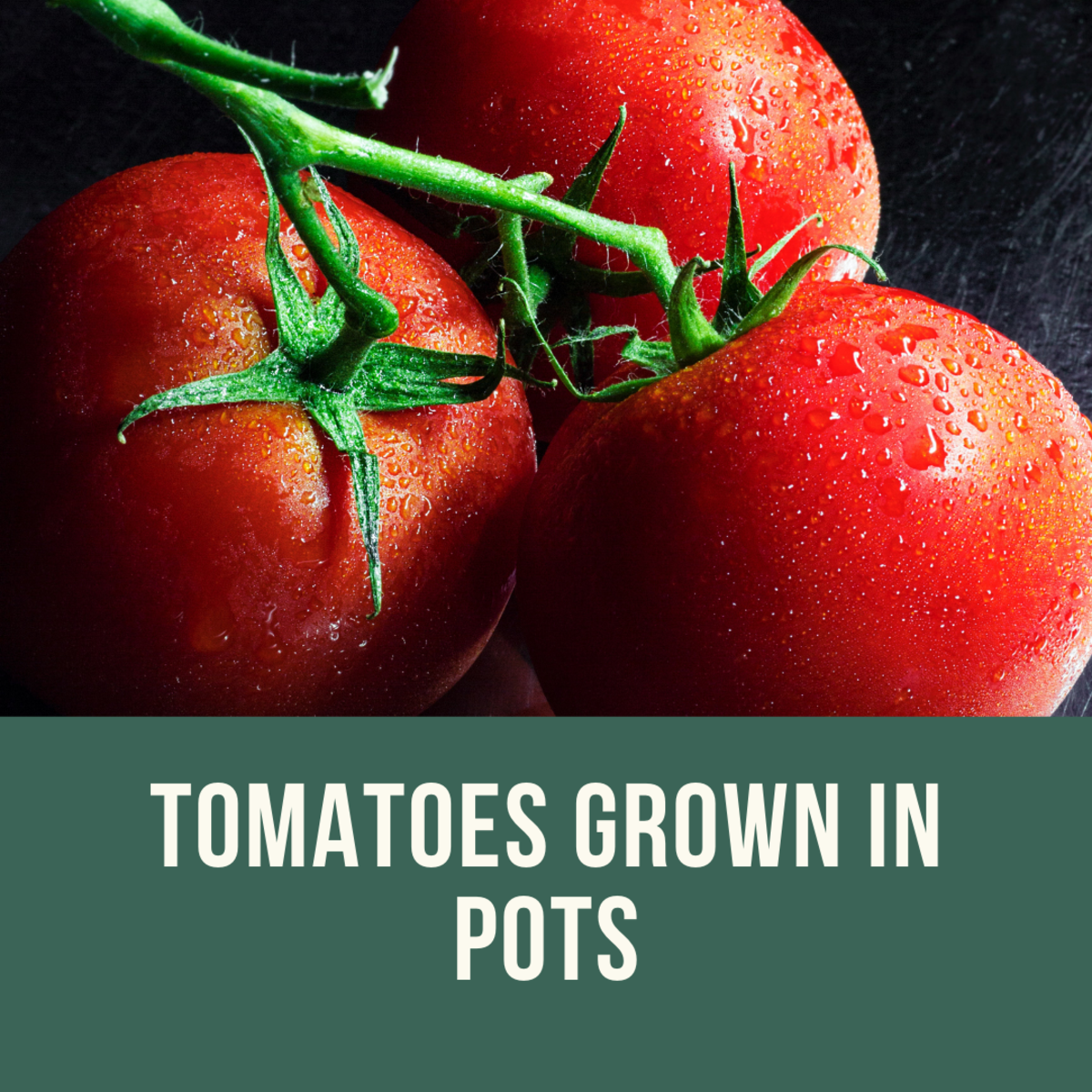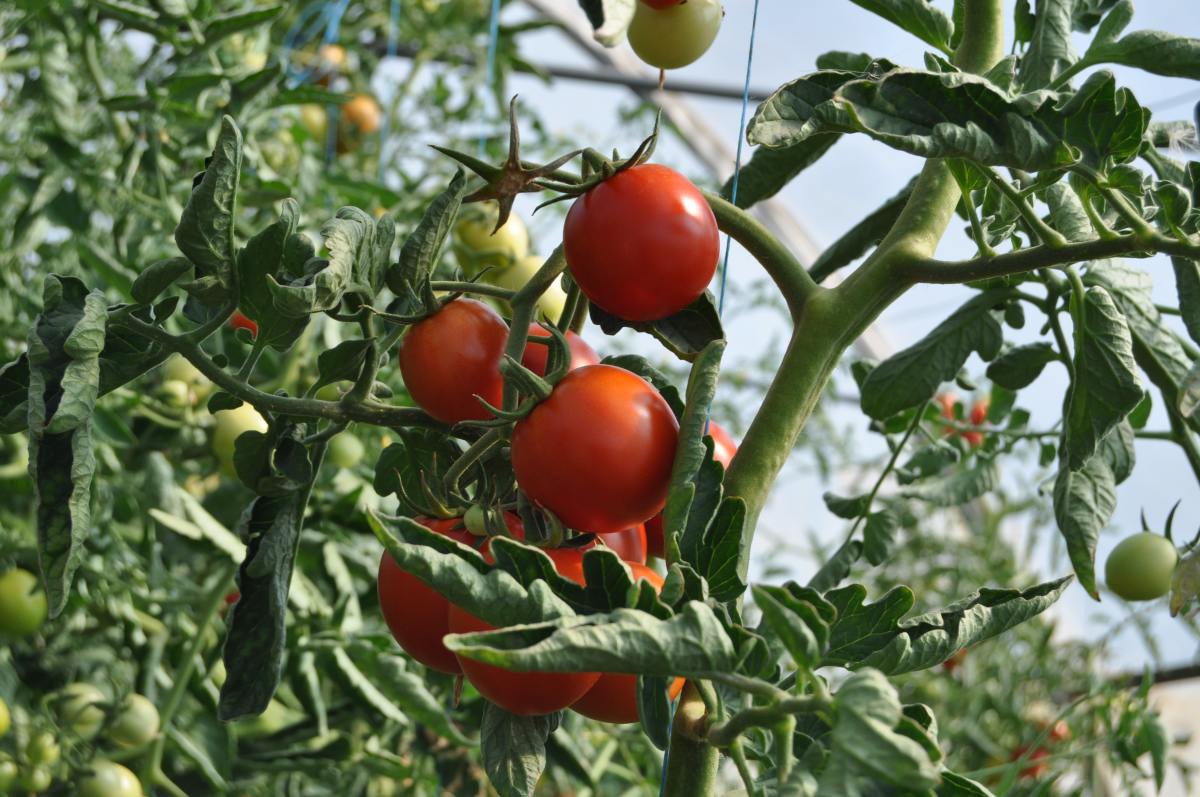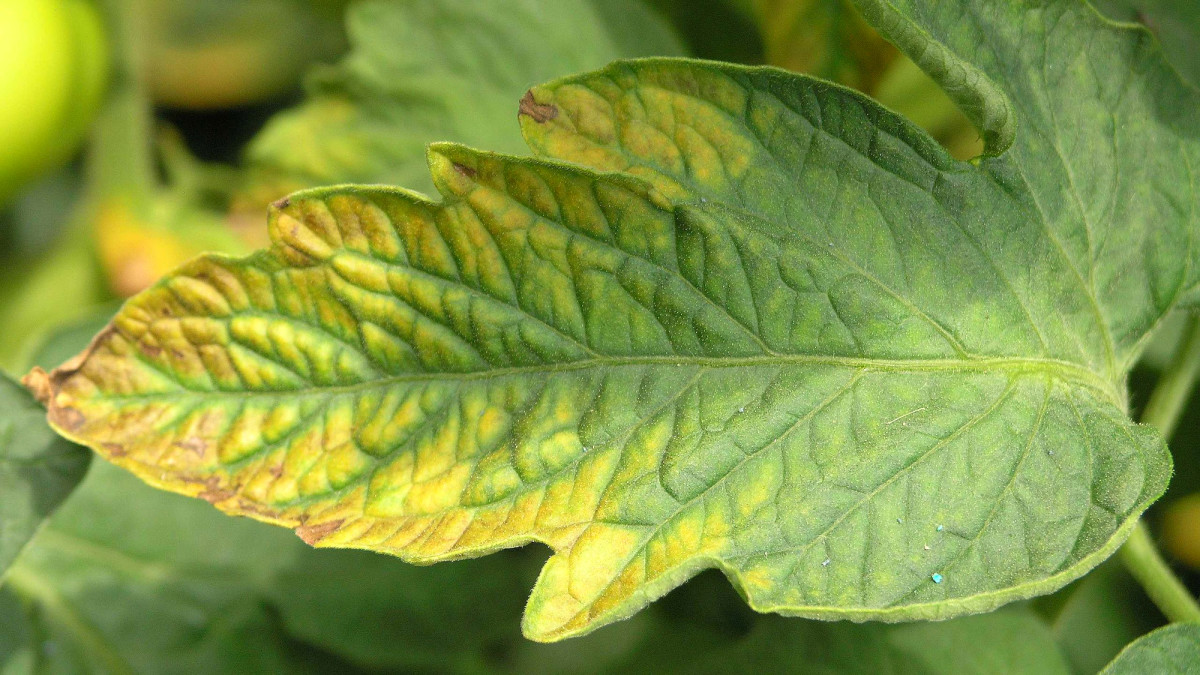- HubPages»
- Home and Garden»
- Gardening»
- Planting Vegetables
How to Plant a Three Sisters Garden
Plant a Three Sisters Garden
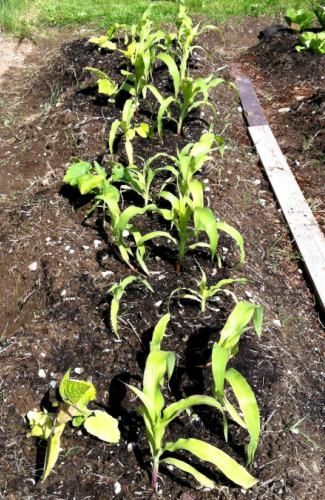
Companion Planting with The Three Sisters - Corn, Squash and Beans
According to many Native American legends the three sisters are corn, squash and beans who can only grow and thrive if they are planted together.
The technique of planting these three different plant seeds together is one that has been used by Native Americans long before the Europeans arrived. It is interesting to see how the wisdom of the Native Americans can now be explained by science of intercropping.
Planting the three plants together allows the corn, beans and squash to work together in a process called companion planting. Each plant helps the others to grow, creating a beneficial relationship, hence the stories of the three sisters working together.
The tall corn provides a natural trellis that the beans can climb up on. The beans provide nitrogen in the soil to help the corn grow. The low-growing squash grows along the ground, protecting the roots, suppresses the weeds and helps to conserves water.
In addition when corn and beans consumed together or within a few hours of each other, they make made a complete protein, or you get all of the amino acids that you need for the day. By eating complete proteins Native Americans (and others who eat grains and beans) are less dependent on animal sources of protein.
You may want to pick up a copy of The Resilient Gardener to learn more about how potatoes, corn, beans, squash, and eggs can be grown in the home and help you be more self-reliant on your own food sources.
Three Sisters Print available on Amazon
Native American Three Sisters Garden Seeds

Three Sisters Seed Packet
From Renee's Garden shares information about the Three Sisters on the seed packet:
- According to Iroquois legend, corn, beans, and squash are three inseparable sisters who only grow and thrive together. This tradition of interplanting corn, beans and squash in the same mounds, widespread among Native American farming societies, is a sophisticated, sustainable system that provided long-term soil fertility and a healthy diet to generations.
- Growing a Three Sisters Garden is a wonderful way to feel more connected to the history of this land, regardless of our ancestry
The Three Sisters Harvest
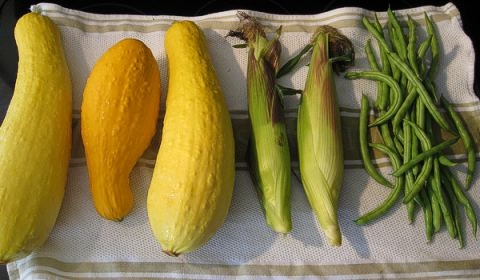
Celebrating the Three Sisters
In late spring, we plant the corn and beans and squash. They're not just plants. We call them the three sisters.
We plant them together, three kinds of seeds in one hole. They want to be together with each other, just as we Indians want to be together with each other.
So long as the three sisters are with us we know we will never starve. The Creator sends them to us each year.
We celebrate them now. We thank Him for the gift He gives us today and every day.
Chief Louis Farmer (Onondaga)
Source: Marykirk Cunningham, David McDavitt, and Beth Romero. Native American Three Sisters Gardens. Webquest. New Mexico State University.
Three Sisters Garden Planting at USDA People's Garden - YouTube
Deputy Secretary Kathleen Merrigan officially kicked off an Earth Day celebration at the U.S. Dept of Agriculture's Whitten Building with Cheyenne River Sioux Tribe Chairman Brings Plenty by planting corn, beans and squash in the traditional Native American way in the People's Garden.
The People's Garden is on a corner of USDA property that has been dug up to bring organic gardening methods to greater awareness. In addition to the 3 Sisters Garden, it includes raised beds, container gardens and other planting demonstrations. The USDA says the food grown there will go to local food banks.
Articles about the Three Sisters Gardening
- Native American Three Sisters Gardens
Welcome to the garden of the Three Sisters. Who are the Three Sisters? The journey that you are about to embark on will inform you. The Three Sisters are not people at all... - Three Sisters Garden: Corn, Beans, Squash - A Native American tradition
Interplanting corn, beans and squash in the same mounds is a sophisticated, sustainable system that provided long-term soil fertility and a healthy diet to generations of Native Americans. Growing the Three Sisters Garden is a wonderful way to feel m - Three Sisters Garden
A Three Sisters Garden is an ancient method of gardening using an intercropping system which grows corn, beans, and squash crops simultaneously in the same growing area that is typically a rounded mound of soil, often called a hill. - The Three Sisters - Bird Clan of East Central Alabama
The three sisters are Corn, Beans, and Squash. They are seen as the three beautiful sisters because they grow in the same mound in the garden. The Corn provides a ladder for the Bean Vine. They together give shade to the Squash. - The Three Sisters
To Native Americans of the Eastern Woodlands the term "Three Sisters" referred to corn, beans, and squash. These three crops give a lesson in environmental cooperation that Native Americans still feel should be emulated by humans today. - The Three Sisters and the Genius of the Indians
Known as the "sustainers of life," the Haudenosaunee consider corn, beans and squash to be special gifts from the Creator. The well-being of each crop is believed to be protected by one of the Three Sister Spirits. - Plant a Three Sisters Garden
Ready to try the three sisters planting method? Check out these gardening tips for a three sisters garden with corn, pole beans, and squash. - Three Sisters: An Ancient Garden Trio - Sara Marcellino | Center for Ecoliteracy
The Three Sisters, corn, beans, and squash, are rich in mythological, cultural, and botanical history, and they belong together nutritionally as complementary foods. - Legends and Myths: The "Three Sisters"
When Native people speak of the "Three Sisters," they are referring to corn, beans, and squash. Known as the "sustainers of life," these are the basic foods of sustenance. They are seen as three beautiful sisters, because they grow in the same mound - The Three Sisters from New York State Museum
Corn, beans and squash, The Three Sisters, were the principal crops of the Iroquois and other Native American groups in the northeastern United States, at the time Europeans arrived here about 1600. By this time, the Iroquois had been planting these - Basketmaker III Food: Corn-Beans-Squash | Peoples of Mesa Verde
Archaeologists estimate that at least half the Pueblo diet during the Basketmaker III period came from corn, beans, and squash. - The Original Companion Planting - The Three Sisters!
The ancient Native American technique of growing Corn, Beans, and Squash together in an arrangement called the Three Sisters is the ultimate in companion planting and helps increase harvests, naturally!
The Resilient Gardener

Legends of the Three Sisters
When Native people speak of the "Three Sisters," they are referring to corn, beans, and squash.
Known as the "sustainers of life," these are the basic foods of sustenance. They are seen as three beautiful sisters, because they grow in the same mound in a garden.
The corn provides a ladder for the bean vine. The squash vines shade the mound and hold moisture in the soil for the corn and beans. The well-being of each crop planted is said to be protected by another.
Many a legend has been woven around the Three Sisters-sisters who should be planted together, eaten together, and celebrated together.
Shelia Wilson
Source: Wilson S. Legends and Myths: The "Three Sisters." Tar Heel Junior Historian 45:1 (Fall 2005)
The Legend of the Three Sisters - YouTube
This video was created by the 2009 spring plant physiology class at Plymouth State University as part of a video contest. Learn the legend and the science behind this method of planting.
2009 Native American
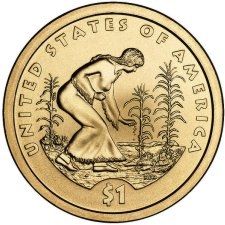
Honoring the Three Sisters - US Mint
The 2009 Native American $1 Coin is based on the theme of agriculture. On the back side it features a Native American woman planting seeds in a field of corn, beans and squash.
The US Mint offered the following additional information about the Three Sisters:
- Three Sisters symbiotic agriculture-planting corn, climbing beans and squash together in the same plot-also originated in central Mexico and probably spread simultaneously with the corn.
- In this efficient planting method, corn stalks provided support for the bean vines, which added nitrogen to the soil. Squash provided ground cover, which discouraged weeds.
- Productivity was much higher (by some estimates as much as 30 percent) for the three grown together than each grown separately.
Native American Gardening

Lesson Plans for Teach the Three Sisters
- Gardening Activites "Three Sisters: Corn, Beans and Squash"
Corn, pole beans, and squash (including pumpkins) are three New World crops that complement the needs of one another both in the garden and in the nutritional content of a meal. In addition, these "Three Sisters" have a rich historical meaning among - Native American Three Sisters Gardens
A WebQuest designed, written, and implemented by Marykirk Cunningham, David McDavitt, and Beth Romero from Abingdon Elementary School in Arlington,Virginia. - Creating a Three Sisters Garden
Native peoples from different parts of North America have used a wide range of agricultural techniques. Perhaps the best known is the interplanting of corn, beans, and squash together a trio often referred to as the "three sisters." Cultivating these - Wampanoag Tribe - Unit on Corn, Beans, and Squash
Unit on Corn, Beans, and Squash - The Three Sisters
To Native Americans of the Eastern Woodlands the term "Three Sisters" referred to corn, beans, and squash. These three crops give a lesson in environmental cooperation that Native Americans still feel should be emulated by humans today. - The Three Sisters: A Native American Curriculum for Thanksgiving - Universal Preschool.com
After a long and difficult journey, the Mayflower, landed in America on December 26, 1620. The Pilgrims settled into an old Native American village to protect themselves from New England's cold winter. Read all about the story of The Three Sisters in - Lesson Plan Topic Corn and Squash
Aim: For students to count at separate times, the number of corn in the corn poster; the number of squash in the squash poster, first along with the teacher and then on their own as the teacher indicates. - Growing Beans, Corn, Squash
The inspiration for this hub began germinating when I read an excellent hub on compatible planting by Zsuzsy bee. I know compatible planting as companion plating but basically only the names are...
Three Sisters Companion Planting - Video
Vegetable Gardening - Three Sisters
Companion planting what the Iroquois valued as the sustainers of life: beans, corn, and squash. Watch the video from GardenGirlTV and learn how to plant them in a raised bed.
The Nearly Perfect Protein
The Three Sisters (corn, squash and beans) when eaten together comprise a nearly perfect protein.
How the Three Sisters Work Together
The Park Seeds Company describes how these three sister plants work together to protect each other and to result in a higher crop yield than if either were grown separately.
- Corn - the oldest of the three sisters stands tall and strong. She acts as a support for the climbing vines.
- Beans - the middle of the three sisters leans on her big sister for support. She helps to bind the three together.
- Squash - the youngest of the three sisters crouches at the other sisters' feet. She shades her sisters feet and protect them from pests.
Corn Packets
Corn is the oldest sister of the three who stand tall and acts as a support for the other two.
Sweet Early Corn Seeds
Silver Queen Corn Seeds
Bean Packets
Bean is the middle sister who binds the three sisters together, but leans on the others for support.
Pole Bean Seeds
Pole Bean Seeds
Tricolor Pole Bean Seeds
Squash Packets
Squash is the youngest sister who crouches beneath the feet of her taller sisters, protecting and shading their feet.
Organic Heirloom Squash Seeds
Summer Crookneck Squash Seeds
Straight Neck Squash Seeds
Companion Planting - Corn, Squash and Beans
Park Seed company offers a great tutorial on how to plant your three sisters.
Corn
- Once the soil has warmed up in May or June plant the corn.
- Start by making a flat-topped circular mound of soil one foot high by two feet across.
- Plant a circle of 5 - 6 Corn seeds on the very top of the mound and water well.
- Space the mounds 3 or 4 feet apart in the garden.
Beans
- Two weeks later once the corn has reached about 5 or 6 inches high, plant 6 - 8 bean seeds around the edges of the flat top or about halfway down the sloping sides of the circular mound.
- Be sure to push the seeds down deep into the soil.
Squash
- One week later plant the squash seeds.
- Plant 6 - 8 squash seeds around the base of the mound on the flat ground.
For smaller gardens, adjust the size of the mounds, the number of seeds and the spacing of the mounds.
For more information and images, see the tutorial on the Park Seed company website.
How to Plant a Three Sisters Garden - YouTube
The Casual Gardener, Shawna Lee Coronado and her family show how to plant a three sisters garden.
More on Planing a Three Sisters Garden
- How to Plant A Native American Three Sisters Garden
The Casual Gardener offers her advice for planing a Three Sisters Garden.
Three Sisters Garden Vegetable Recipes
Three Sisters Summer Vegetables for Cooking
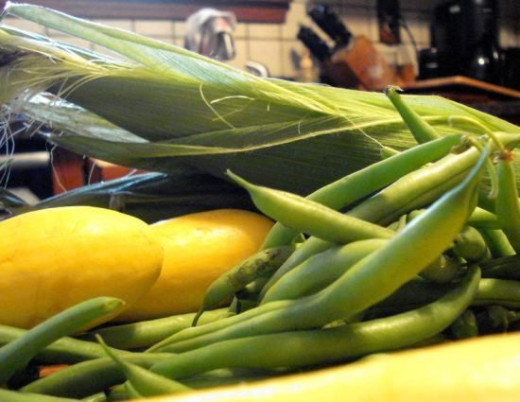
Three Sisters Stew
A stew made with the Three Sisters - Corn, Beans and Squash (Butternut)
Adapted from "The Three Sisters: Corn, Beans and Squash" from the Colorado Department of Agriculture, Soups and Salads.
They recommend, "If time allows, let the stew stand for one to two hours before serving, then heat through again. The stew should be thick and very moist but not soupy. Add additional stock or water if needed."
Cook Time
Prep Time: 20 minute
Total Time: 1 hour +
Serves: 6 (1 cup servings)
Ingredients
- 1 large butternut squash (2 pounds. Can use pre-cubed if available)
- 1 tablespoon olive oil
- 1 chopped medium onion
- 2 cups diced tomatoes
- 2 cups cooked pinto beans (about 3/4 cup raw) or 16-ounce can drained and rinsed
- 2 cups corn kernels (2 large or 3 medium ears frozen or drained from a can)
- 1 cup water
- 1 teaspoon ground cumin
- 1 teaspoon dried oregano
- Salt to taste
- Ground black pepper
Instructions
- Prepare the butternut squash - in the Oven or the Microwave
- For the oven preheat to 400 degrees.
- Halve the squash and scoop out the seeds and fibers.
- Place cut side up in a shallow baking dish and cover tightly with foil.
- Bake in the oven for 40 to 50 minutes, or in the microwave for ~ 10 minutes, just until done but still firm.
- When cool enough to handle, scoop out the pulp, and cut into large dice.
- * Set aside squash until needed.
- Heat the oil in a soup pot.
- Add the onion and cook over medium to low heat until the onion is golden.
- Add the butternut squash, tomatoes, beans, corn and water and bring to a simmer.
- Simmer gently, covered, until all the vegetables are tender, about 20 to 25 minutes.
- Season to taste with salt and ground pepper.
- Serve in shallow bowls.
Recipe: Three Sisters Corn Casserole
Another recipe that lets you use the three sisters vegetable ingredients. This one works up as a casserole.
Adapted from the "Three Sisters Corn Casserole" from the Cookin' with the Three Sisters.
Cook Time
Prep Time: 30 minutes
Total Time: 1 hour +
Serves: 5 (1 cup servings)
Ingredients
- 1/2 pound whole kernel corn (fresh canned or frozen)
- 1/2 pound green beans (fresh canned or frozen)
- 1/2 pound diced summer squash (2 cups)
- 1 cup low fat sour cream
- 1/4 cup egg substitute
- 2 tablespoons melted margarine
- 1/2 cup yellow cornmeal
- 1/4 cup diced Jalapeno peppers
- 1/4 cup reduced fat Montery Jack cheese diced
- Vegetable oil spray
Instructions
- In a large mixing bowl, mix sour cream and beaten egg substitute together.
- Add corn, beans, squash and mix well.
- Add melted margarine, cornmeal, peppers and cheese mixing all ingredients together.
- Coat a baking pan or casserole dish with vegetable oil spray and fill with mixture.
- Bake at 350 degrees Fahrenheit for 45 minutes
- Casserole is done with it is a golden brown.
More Recipes for Cooking with the Three Sisters
Various recipes using the Three Sisters - Corn, Squash and Beans
- Cookin with Three Sisters - Corn Recipes
This entire section is courtesy of the Oneida Indian Nation who developed an effective program call the Three Sisters Nutrition Project to benefit American Indians suffering from a variety of modern diseases from the Manataka American Indian Council. - Cookin' With Three Sisters - Bean Recipes
A collection of bean recipes from the Manataka American Indian Council. - Cookin' With Three Sisters - Squash Recipes
A collection of squash recipes from the Manataka American Indian Council. - Three Sisters Corn Casserole
A recipes for Corn Casserole from Oneida Indian Nation Communications. - Three Sisters Stew
Corn, beans, and a variety of squash, are used in this recipe for Three Sisters Stew from Oneida Indian Nation Communications.. - Three Sisters Enchiladas
This layered dish utilizes corns, beans, and squash and serves eight from Oneida Indian Nation Communications. - Three Sisters Casserole
Vegetarian Times delivers simple, delicious food, plus expert health and lifestyle information that is exclusively vegetarian but wrapped in a fresh, stylish mainstream package that is inviting to all. Including me.
Vegetable Soup - With Squash, Beans and Corn
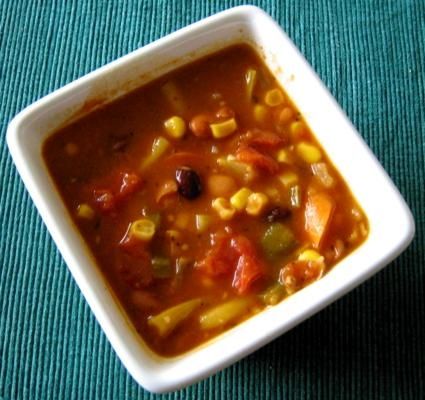
Recipe for the Very Veggie Soup
This vegetable soup features squash, several types of beans and corn.
- Pantry Raid & Produce Run Soup
I whipped up this very veggie soup yesterday after picking up some local produce & having a pantry raid. It's occurred to me that it actually is relatively cheap to make while being quite filling & a great way to get your vegetables in.
Had you heard about this Three sisters story?
Will you try it with your garden this year?
© 2010 Kirsti A. Dyer




